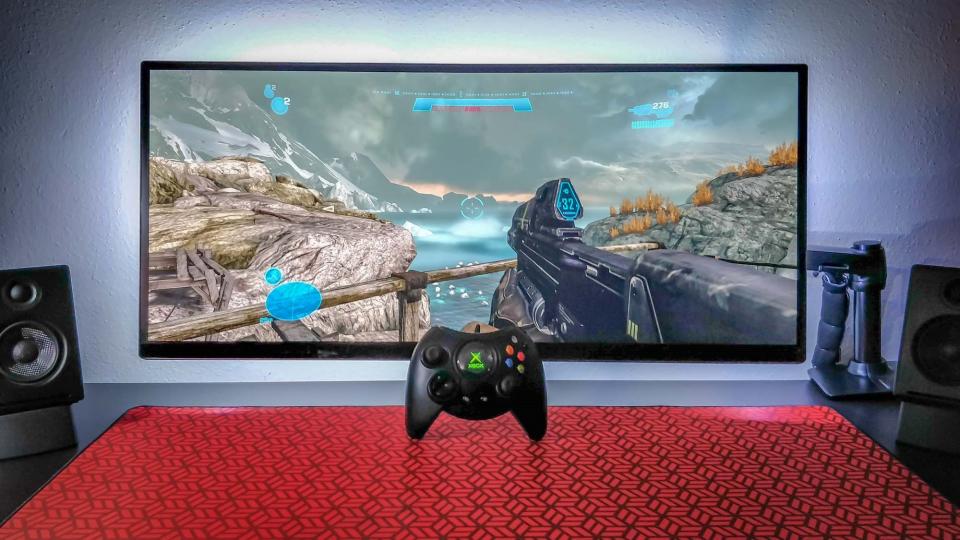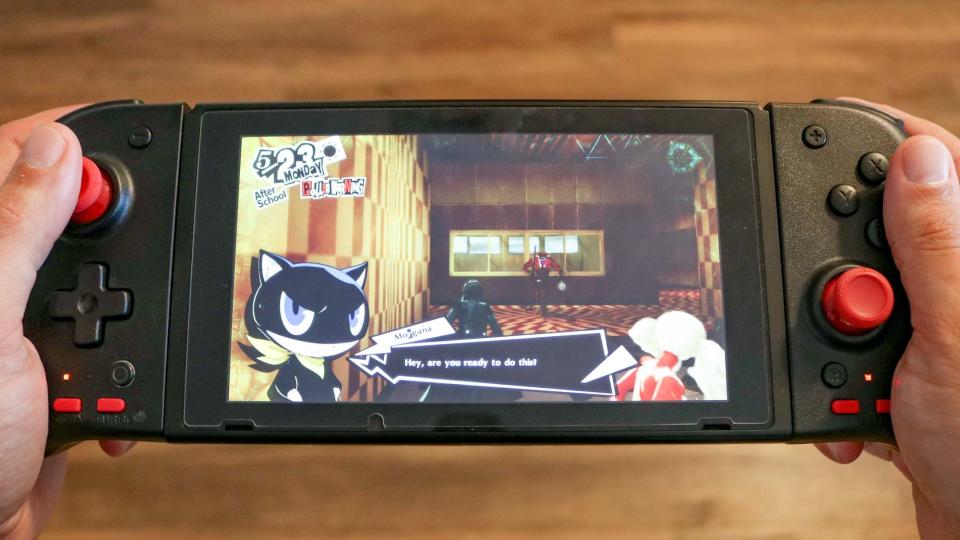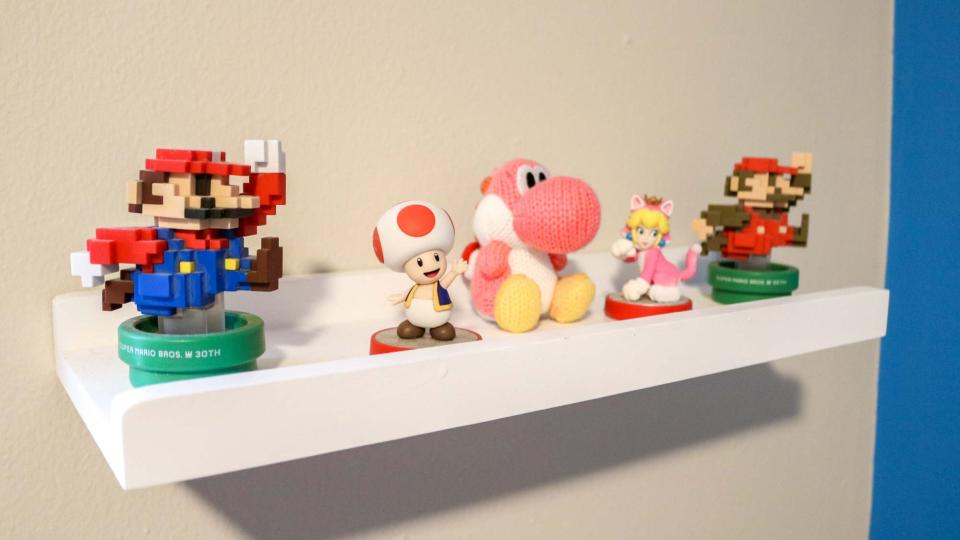The Nintendo Switch 2 needs backwards compatibility but not in the way you think

Now that The Legend of Zelda: Tears of the Kingdom has arrived as the perfect send-off for the Nintendo Switch, Nintendo’s next console is back on everyone’s minds.
While some thought the latest Zelda game might be a cross-generation game that was released on both the Switch and its successor like Breath of the Wild did back in 2017, that didn’t end up happening. Personally, I’m glad this was the case as if it had been, the Nintendo Switch 2 might have ended up being rushed.
Now though, Nintendo has another massive hit on its hands with a bit more time to perfect the Switch 2. There are a number of upgrades we’d like to see in the Switch 2 from upgraded Wi-Fi to drift-free Joy-Cons and a more powerful chipset. However, backwards compatibility with the Switch’s existing library of games would go a long way to making its successor a day-one purchase.
As someone who’s invested heavily in the Switch and its ecosystem, backwards compatibility is extremely important to me. However, alongside all of my digital and physical games, I also want to be able to use my Joy-Cons and all of my other Nintendo Switch controllers.
My next-gen conundrum
I’ve been having so much fun playing the best Nintendo Switch games over the past six years that I’ve put off upgrading to either a PS5 or Xbox Series X. Alongside my gaming PC, the Switch has more than enough games to keep me occupied.
While I’ve yet to buy a next-gen console, I’ve still been following all of the news carefully so that I’m ready when I do decide to upgrade. Although the PS5 will likely have better exclusive games just like the PS4 did, I like the design of both the Series X and Series S a lot more than Sony’s futuristic reinvention of the PlayStation.
Besides being more powerful on paper, the Series X has another thing going for it that the PS5 doesn’t: all of your old Xbox One controllers work with Microsoft’s latest console. This may not be that big of a deal for some people, but for those with a controller collection as big as mine, it adds a lot of value to the Series X or even the Series S.

For instance, I can pick up my Hyperkin Duke controller modeled after the one that shipped with the original Xbox, plug it in and it will just work. While PS4 controllers can be used to play PS4 games on the PS5, they don’t work with the best PS5 games. The DualSense does add an extra layer of immersion to PS5 games but I still don’t know if it justifies the cost of no longer being able to use your old controllers.
A third-party controller renaissance

The hybrid nature of the Nintendo Switch led to all sorts of accessories being made for the console. From grips to make playing in handheld mode more comfortable to carrying cases and even 3D printed holders for your dock and Switch cartridges, accessory makers had their hands full with the Switch.
Unlike the Wii U which had very few third-party controller options, PowerA, PDP, Hori and most notably, 8BitDo all released new controllers for the console. This made sense as the Nintendo Switch Pro Controller cost $70 when the console was released and gamers needed cheaper options.

In addition to cheaper Pro Controller options, we also saw third-party Joy-Con alternatives in a number of different shapes and sizes. While Hori’s D-Pad Controller was one of the first, its Split Pad Pro took things to another level with bigger grips and full-size joysticks. In the time since, we’ve seen other great Joy-Con alternatives like the Binbok RGB Joy-Cons along with some cheaper options.
With games like Mario Kart 8 Deluxe, Super Smash Bros.Ultimate, Switch Sports and the others on our list of the best Nintendo Switch multiplayer games, it’s likely that you also picked up a few controllers for your Switch.
Being able to use them on the Switch 2 would certainly help convince current Switch owners to upgrade. That is as long as the new console is also backwards compatible with their existing game libraries.
Don’t forget about the Amiibos

Even though we haven’t seen Nintendo do that much with its Amiibo toys-to-life series recently, they are one of the more interesting features that helps set the Switch, as well as the Wii U and 3DS before it, apart from what Microsoft and Sony are doing.
With Mario, Luigi, Bowser, Princess Peach, Yoshi, Donkey Kong, Link, Zelda, Tom Nook, Samus and its other iconic characters, Amiibo provides Nintendo fans with a way to hold a piece of their favorite games in their hands. They’re really cute and unlike Funko Pops, they actually serve a purpose as many can be used on the Switch to get exclusive items or new outfits in games.
It’s rare to find a third-party controller that supports Amiibo, but there are a few with the GuliKit KingKong 2 Pro being the most popular. Even then though, the Joy-Cons that shipped with your Switch have Amiibo support thanks to the inclusion of NFC as does the Nintendo Switch Pro Controller.
Although Amiibo aren’t nearly as popular as they once were, it would be a shame to see them go away for good since they are one of the only toys-to-life series that are still around. Given the failure of Starlink: Battle for Atlas, we likely won’t see any other company try their hand at this genre for quite some time.
There’s still hope for backwards compatibility at least with controllers

Even if Nintendo decides to completely redesign the Switch 2 from the ground up to avoid having another Wii U on its hands, there will likely be workarounds to get your old Switch controllers running on the new console.
8BitDo, Brooks, BigBig Won and other companies make a variety of USB adapters you can plug into your Switch dock to be able to use the best PC game controllers or almost any other controller you want on Nintendo’s console. Many of them also work the other way around if you want to use your Nintendo Switch Pro Controller on your Xbox or PlayStation.
Still, existing Switch controllers being backwards compatible with the Switch 2 would make things a lot easier, plus, you’ll end up with fewer dongles to keep track of. Whether or not the Switch 2 is backwards compatible with Switch games and controllers is hopefully something we’ll find out directly from Nintendo later this year (fingers crossed).
